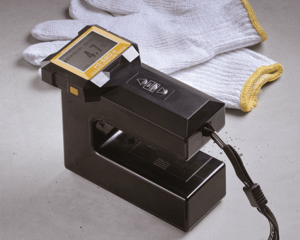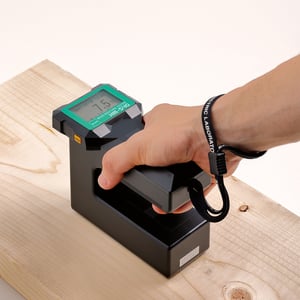 Paper and wood products are important parts of our everyday lives. We build our homes with wood, and gather around wooden tables. We publish novels with paper and we even create lifelong memories at gatherings with easy clean-up, thanks to products like paper plates and napkins.
Paper and wood products are important parts of our everyday lives. We build our homes with wood, and gather around wooden tables. We publish novels with paper and we even create lifelong memories at gatherings with easy clean-up, thanks to products like paper plates and napkins.
Everywhere we go, pulp, paper, and wood are there. It’s in our car tires and even our LCD screens. The applications of these versatile products may surprise even those who consider themselves "in-the-know."
Here’s an in-depth look at how the industry uses pulp, paper, and wood, and how Kett can help with world-class testing instruments.
The Uses of Pulp
Pulp is an incredibly diverse product. Most know that it is made from trees, which makes it a renewable resource. It’s also biodegradable. The American Forest & Paper Association refers to it as, “One of the most versatile materials around.”
Its uses range from the things we rely on every day like tissues and baby wipes, to the things we may not think of as being made from pulp, like LCD screens, car filters and tires, and renewable fuel. It is made by breaking down fibrous parts of plants, trees, and recycled paper. It is commonly used in papermaking, and in these cases, the pulp is most often made from trees. Pulp is also quite eco-friendly; when recycled appropriately, it can be used as many as 5 to 7 times. It’s a perfect option for those looking for sustainably-manufactured products.
What are some of the applications for pulp? There are a surprising amount of uses for the material, including:
- Paper, receipts, and envelopes
- Paper cups, napkins, tissue, toilet tissue, and other household paper products
- Cardboard
- Baby wipes and diapers
- LCD screens
- Shoes
- Handbags
- Food casings
- Filters
- As binding agents for food products and pharmaceuticals
- Labels
- Stickers
Unless you’re in the industry, what some may not realize is that different kinds of trees produce different kinds of wood, and therefore also different types of pulp. Softwood varies greatly from harder woods, for example.
Softwoods like pines and spruce have longer fibers, which makes them stronger and increases their absorbency. It’s used for things like paper towels, packaging papers, diapers, and hygiene products. Trees like birch and eucalyptus have shorter fibers, which makes them ideal for things like tissue paper.
The Applications for Paper Products
Paper is a major part of our world; it’s in our books, paper grocery bags, newspapers, to-do lists, and birthday cards. However, like pulp, paper is also used in the manufacture of things like tissues and paper plates.
In most cases, paper today is made from trees that are grown in sustainable forests, or even from recycled paper. In fact, recycling is an important part of papermaking. Paper mills use recycled paper to make newsprint, notebooks, copy paper, and more. Often, they combine this recycled paper with wood remnants from sawmills.
Environmentally-minded individuals will be glad to know that somewhere around 80 percent of mills in the US use at least some recycled paper to manufacture new paper products today.
Paper products include a long list of different kinds of paper, such as:
- Newsprint
- Printing paper
- Fine and pressure-sensitive paper
- Household products like napkins, paper towels, and toilet tissue
- Paper bags and kraft bags
- Construction and industrial paper
- Paper board
- Certain packaging containers and containerboard
The Uses of Wood Products
Wood is a product we encounter in our daily lives in so many ways. It’s an integral building block that makes up so much of our world. It’s both porous and fibrous, and it provides a firm structure for houses, furniture, and more.
All the way back to ancient eras, wood has been used in countless ways. Modern uses of wood include:
- Home construction, fencing, flooring, frames, cabinets, doors, and window frames
- Utensils like wooden mixing spoons
- Sculptures and other works of art
- Musical instruments like pianos, violins, cellos, guitars, and more
- Furniture for home and office use
- As a source of fuel and heat
Many individuals take up woodworking as a specialized craft or hobby—some even make a career out of it. This productive craft can involve a lot of different techniques including cutting, shaping, turning, and joining wood pieces. Woodworkers, cabinetmakers, artisans, and carpenters alike will speak to the strength and enduring quality of wood.
Monitoring the Moisture Levels of Wood, Paper, and Pulp
 No matter the final application, Kett provides professionals with the high-caliber instruments they need to ensure a successful outcome.
No matter the final application, Kett provides professionals with the high-caliber instruments they need to ensure a successful outcome.
Test measurements for pulp and paper can determine two separate things: Composition and physical characteristics. Some composite wood-based products that are made from cellulose and/or wood pulp must also be carefully monitored for their organic composition since they are made from two main materials: Wood and water. What’s more, wood must be acclimated to its environment before installation to avoid warping, expanding, or contracting that could compromise the integrity of the finished product.
For pulp and paper, Kett customers rely on Near-Infrared (NIR) Meters to determine moisture levels. NIR meters reflect light off of the test subject, and the meter measures the amount of light at certain wavelengths that bounce back from the subject. In this case, the higher the moisture percentage, the more light is absorbed by the test subject. The KJT130 Near Infrared Moisture Meter provides instant, non-contact, non-destructive readings, is portable, and is very easy to use. It can be used on everything from wood chips, wood fiber, pulp, paper and to the end products.
Other instruments ideal for monitoring wood, paper, and pulp? The KB30 In-Line NIR Moisture Meter, a smart online process analyzer that can monitor the moisture of almost any solid, and the KJT700 Online MIR Composition Meter, which uses the principle of NIR reflectance to organic composition (think BTU, moisture and certain organic additives) online on conveyors, within drop chutes, and during pneumatic transports and gravity feeds. Both are smart solutions to monitor moisture content of materials like wood chips while in motion.
Those who work with paper can also use the HK300 Instant Paper Moisture Meter to track and monitor moisture levels. This instrument is specifically designed to read moisture levels for paper, kraft board, and paperboard, and is very simple to use. It comes with several factory calibrations for standard paper products and can be calibrated to meet specialized additional needs and local standards. Test samples require no preparation or pre-processing. The HK300 provides instant, accurate results by simply touching or clamping the product sample. With three probes and a sturdy design, the HK300 can be used for:
- Paper rolls and stacks
- High-moisture paper products
- Liner board
- Low-moisture copy paper
- Kraft paper
These probes can also be used for single-sheet measurements and compression tests.
For wood, Kett offers customers the option to take moisture readings without damaging the test subject. The HM530 Non-Destructive Wood Moisture Tester uses a high-density coil to produce a high-frequency capacitance with two aluminum plates that measure the dielectric constant that’s converted to a moisture value. It also automatically adjusts for wood thickness and temperature. It is ideal for use with:
- Multi-laminate lumber like plywood
- Particle board
- Fiberboards
- Hard and soft woods
- Kiln-dried wood
- Rare and fine wood
To learn more about how Kett can help you with wood, paper, and pulp applications, discover our brochure here. Then, connect with our team today to get the test instruments you need for accurate results and long-lasting instruments that will last for decades to come.


